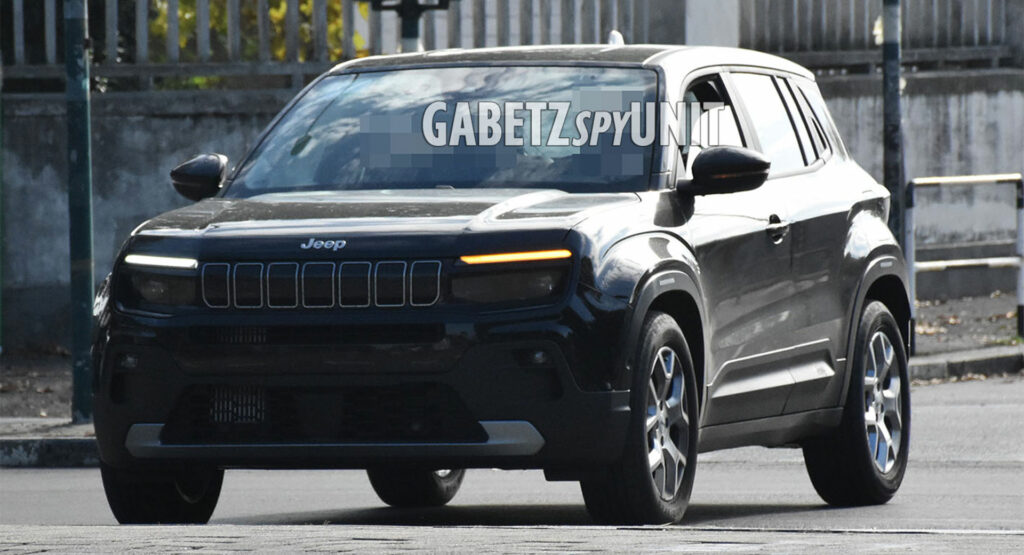Hot on the heels of the 2023 Jeep Avenger being unveiled at the Paris Motor Show, the SUV has been snapped on the street without any camouflage, providing us with our first opportunity to see what it is like on the move in ICE guise.
In designing the new SUV, which will initially be available as an EV, Jeep could have followed the same recipe as some of its rivals and thrown out the rulebook, creating something that looks unlike anything else from the company’s range. It hasn’t done that, however, ensuring that the Avenger is immediately identifiable as a Jeep.
Read: 2023 Jeep Avenger Detailed As A FWD Electric SUV For Europe, ICE Variant Coming Soon
One of the first things that stands out with the Jeep Avenger is the headlights. In an unusual move for a series production car, Jeep has heavily tinted the headlights, so much so that they blend neatly into the gloss black front grille. Sitting above the tinted headlights are simple LED daytime running lights that give the SUV a purposeful look.
This test car is painted in a simple shade of gloss black and sits on a set of attractive five-spoke wheels. It may not have the same off-road credentials as long-standing Jeep models like the Wrangler and Cherokee but it looks good on the open road which is where most will spend almost all of their time.
Jeep has not yet announced full specifications for the petrol version of the Avenger as much of the focus has been more on the EV. What we do know is that it will be sold with a 1.2-liter turbocharged three-cylinder petrol engine, the same unit that power so many Stellantis models. The only obvious visual distinction between the EV and ICE models will be the latter’s exhaust pipes.
Underpinning the Jeep Avenger EV is the same eCMP architecture as the Peugeot e-2008, Opel Moka-e, and Citroen DS3 E-Tense. The electric Avenger rocks a 54 kWh battery pack mounted under the front and rear seats and through the central tunnel that drives a 400-volt electric motor at the front. It delivers 154 hp and 192 lb-ft (260 Nm) of torque. Jeep claims a WLTP range of 249 miles (400 km) on the combined cycle and up to 342 miles (550 km) on the urban cycle.



